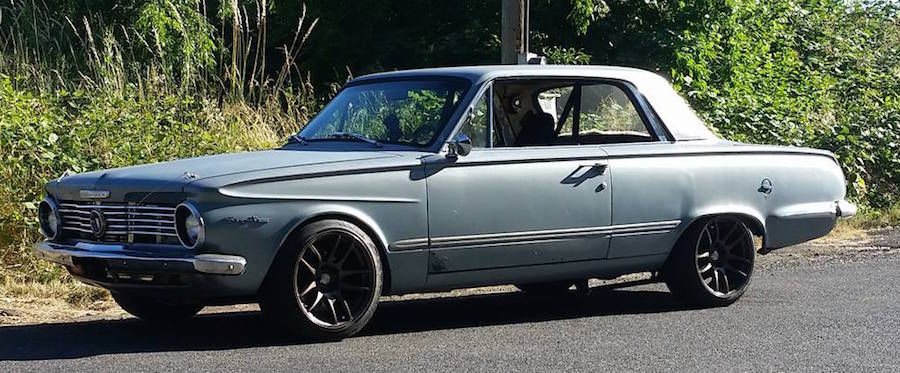
Yesterday, while hunting Craigslist for first-gen Ford Mustangs for ACC, I tripped over this twin-turbo 1964 Plymouth Valiant for sale.
Yep, that’s right — someone took a slant-six powered Plymouth Valiant and swapped in a Japanese straight six, specifically the 24-valve 6-cylinder Toyota 1JZ engine along with other spare parts.
What does that mean, exactly? Well, those engines are well-known in the tuner world as decent performers, whereas that same crowd probably looks at the perfectly good Chrysler slant six with scorn, or at least skepticism. But on some levels, it does make sense: Why run something so antiquated as a clapped-out Chrysler mill when you can just swap in something newer? The Toyota engine makes a bunch more power, too — and it’ll likely get much better mileage as well. But did it really make the car better?
All this got me thinking about the future of collecting — specifically when it comes to everyday cars like the Valiant. How many of the next generation’s owners going to keep their cars totally stock, especially when they’re not especially exciting in their original configurations? Ultimately, are modifications like the ones on this little Valiant a good thing or a bad thing?
This isn’t the first trans-Pacific conversion I’ve seen done, and I’m sure it won’t be the last. Ultimately, I think stuff like this is great for the hobby, because it’s something different for us American car guys to talk about, and it also is generating interest across the aisle in the younger-demographic Japanese car world as well. Think of it as a doorway to classic American cars for a generation that didn’t grow up with easy access to them. Here’s the key: Note that this seller is looking to source a C2 Corvette with the money he makes selling this car.
I just hope he isn’t planning on dropping in a GT-R engine in place of a small-block Chevy.
What do you think about this conversion? Sound off in the comments below.
Image: Craigslist